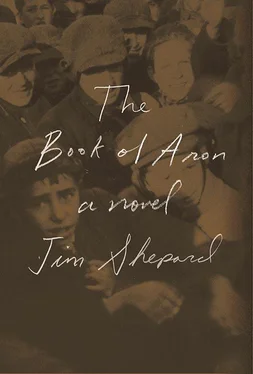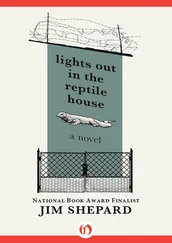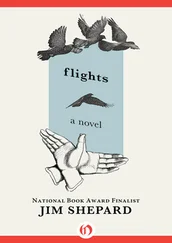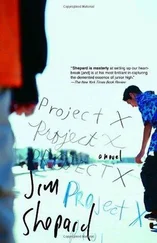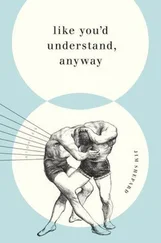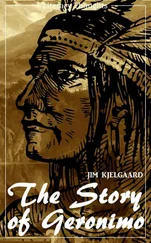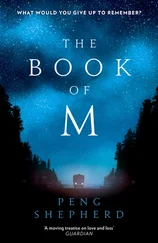“So do I,” Lejkin said. The headband of his cap was so soaked you couldn’t read the lettering. He poured water down his shirtfront.
“I know where all the smugglers are,” I told him.
“So do I,” he said.
“No you don’t,” I said.
He looked at me like he’d been swindled before. “So I get you out of here and you’ll deliver those people to me?” he said.
I pointed to Korczak and Madame Stefa and said, “You get them out of here and I’ll deliver those people to you.”
“Ah,” he said. “Well, a lot of people would like to get him out of here.” He said something to the policeman beside him and we walked over to Korczak.
“Pan Doctor,” he said.
“Mr. Lejkin,” Korczak said. He didn’t have his glasses and the sun made him squint.
“Another train is on its way,” Lejkin told him.
“Another train is always on its way,” Korczak said. He was shaking.
“This young man seems to think you should be saved,” Lejkin told him.
“I think we all should be saved,” Korczak said.
“It’s possible that could be arranged,” Lejkin told him.
Korczak looked up. “And how would that happen?” he said.
“You’d have to come with me and ask the commanding officer,” Lejkin said.
“And where is he?” Korczak asked.
“Not far,” Lejkin said. “A ten-minute walk.”
“Will you guarantee they won’t be taken away while I’m gone?” Korczak asked.
“You’re joking, yes?” Lejkin said. “You’re making a joke?”
“Then no,” Korczak told him.
“You might be able to get everyone out,” I said.
“So I should leave them here, all by themselves, in this place?” he asked me.
“I’ll watch them. You could hurry,” I said.
“You’ll watch them,” he said.
“I’ll watch them,” I said.
“And can you imagine what it would be like for them if the next train comes back while I’m gone?” he said.
“Please,” I said.
“Please what?” he said.
“ Listen to me,” I shouted. But the truth was I couldn’t imagine anything. I always imagined myself, put upon. I never imagined anything else. And the next train sounded its whistle and ground around the curve into view and there was more screaming and calling out of names until its brakes drowned everyone out.
Korczak turned his attention back to his boys and Madame Stefa stood up and walked over to him. Girls hung on to her skirt. Korczak held out his hand and she squeezed it. Zygmuś and Mietek squatted wet-eyed and miserable. “I pissed myself,” Zygmuś told me as though that were the worst of all. By the train cars the shouting started up again.
“Everyone up,” Korczak said. “Rows of four.”
I wailed and shook and jabbered until someone took my hands from my face. It was Korczak. “Stop,” he said. But I wouldn’t.
“I never showed you my Declaration of Children’s Rights,” he said. Behind him the kids had collected their things, boys and girls together, and had gotten into their rows. Zygmuś was pulling at the back of his pants. A yellow policeman beside him started to weep.
“There isn’t a bit of me left in sound health,” Korczak said to himself.
He bent farther down until he was close enough for me to smell him. He put his hands behind my head and lowered his forehead to mine. I was blubbering and got his face wet but he only drew closer. “ ‘The child has the right to respect,’ ” he said. “ ‘The child has the right to develop. The child has the right to be. The child has the right to grieve. The child has the right to learn. And the child has the right to make mistakes.’ ”
NOTHING IS DEFINITIVELY KNOWN ABOUT THE last hours of Janusz Korczak and his staff members and his children, and for some time after the war it was said that he and Stefa and some of the orphans had been saved and that they had been seen in villages throughout Poland. Accounts vary, but most likely they were deported to Treblinka on the afternoon of August 5, 1942. Dr. Imfried Eberl, the commander of the camp, reported to his superiors that at the time Treblinka was in such a state of overtaxed chaos that mountains of corpses confronted the new arrivals, and therefore maintaining any kind of deception on the way to the gas chambers was nearly impossible.
My main object here, to quote Marguerite Yourcenar in her Bibliographical Note to her Memoirs of Hadrian , has been “to approach inner reality, if possible, through careful examination of what the documents themselves afford,” and so this novel could not have existed, or would have existed in a much diminished form, without critically important contributions from the following sources: Janusz Korczak’s Ghetto Diary; The Selected Works of Janusz Korczak , Martin Wolins, ed.; Aaron Zeitlin’s prose poem “The Last Walk of Janusz Korczak”; Emmanuel Ringelblum’s Notes from the Warsaw Ghetto , Jacob Sloan, ed.; Barbara Engelking and Jacek Leociak’s The Warsaw Ghetto: A Guide to the Perished City; Marta Markowska’s The Ringelblum Archive: Annihilation — Day by Day; Bogdan Wojdowski’s Bread for the Departed; and Dawid Rubinowicz’s The Diary of Dawid Rubinowicz . I’m also hugely indebted to To Live with Honor and Die with Honor: Selected Documents from the Warsaw Ghetto Underground Archives O. S. (Oneg Shabbath) , Joseph Kermish, ed.; The Warsaw Ghetto Oyneg-Ringelblum Archive Catalog and Guide , Robert Moses Shapiro and Tadeusz Epsztein, eds.; The Diary of Dawid Sierakowiak , Alan Adelson, ed.; The Yad Vashem Encyclopedia of the Ghettos During the Holocaust , Guy Miron and Shlomit Shulhani, eds.; Words to Outlive Us: Eyewitness Accounts from the Warsaw Ghetto , Michał Grynberg, ed.; Awakening Lives: Autobiographies of Jewish Youth in Poland Before the Holocaust , Jeffrey Shandler, ed.; From a Ruined Garden: The Memorial Books of Polish Jewry , Jack Kugelmass and Jonathan Boyarin, eds.; The Last Eyewitness: Children of the Holocaust Speak, Volume 1 , Wiktoria Śliwowska, ed., Volume 2 , Jakub Gutenbaum and Agnieszka Latała, eds.; Hunger Disease: Studies by the Jewish Physicians in the Warsaw Ghetto , Myron Winick, M.D., ed.; The Diary of Samuel Golfard and the Holocaust in Galicia , Wendy Lower, ed.; The Warsaw Diary of Adam Czerniakow , Raul Hilberg, Stanislaw Staroń, and Josef Kermisz, eds.; and Betty Jean Lifton’s The King of Children . I also found crucially useful Agnieszka Witkowska-Krych’s article “The Last Journey of the Residents and Staff of the Warsaw Orphanage”; Lucjan Dobroszycki’s The Chronicle of the Łódź Ghetto, 1941–1944; Leni Yahil’s The Holocaust: The Fate of European Jewry 1932–1945; Kurt Grübler’s Journey Through the Night: Jakob Littner’s Holocaust Memoir; Adina Blady Szwajger’s I Remember Nothing More: The Warsaw Children’s Hospital and the Jewish Resistance; Abraham Lewin’s A Cup of Tears: A Diary of the Warsaw Ghetto , Antony Polonsky, ed.; Raul Hilberg’s The Destruction of the European Jews; Günther Schwarberg’s In the Ghetto of Warsaw: Heinrich Jöst’s Photographs; Hanna Krall’s Shielding the Flame: An Intimate Conversation with Dr. Marek Edelman, the Last Surviving Leader of the Warsaw Ghetto Uprising; Naomi Samson’s Hide: A Child’s View of the Holocaust; Willy Georg’s In the Warsaw Ghetto: Summer 1941; Jürgen Stroop’s The Stroop Report; Larry Stillman and Morris Goldner’s A Match Made in Hell: The Jewish Boy and the Polish Outlaw Who Defied the Nazis; Manny Drukier’s Carved in Stone: Holocaust Years — A Boy’s Tale; Bernard Gotfryd’s Anton the Dove Fancier and Other Tales of the Holocaust; Lizzie Collingham’s The Taste of War: World War II and the Battle for Food; Joseph Ziemian’s The Cigarette Sellers of Three Crosses Square; George Eisen’s Children and Play in the Holocaust: Games Among the Shadows; Rubin Katz’s Gone to Pitchipoï: A Boy’s Desperate Fight for Survival in Wartime; Rochelle G. Saidel’s Mielec, Poland: The Shtetl That Became a Nazi Concentration Camp; Aviad Kleinberg’s article “The Enchantment of Judaism: Israeli Anxieties and Puzzles,” Critical Inquiry 35, no. 3 (spring 2009); Claude Lanzmann’s documentary Shoah; and Daniel Mendelsohn’s The Lost: A Search for Six of Six Million .
Читать дальше
